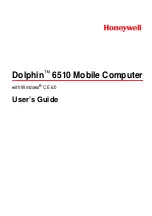
DSP Interrupt Interface
8-28
8.5.3
Level-Sensitive Interrupts
The level-sensitive interrupt process is, in many ways, identical to the edge-
triggered interrupt process. This process also uses a chain of four positive-
edge triggered timing flip-flops, but this chain is driven by the inverted repre-
sentation of the incoming interrupt nXIRQ(N). A negative transition (falling
edge) on the incoming nXIRQ(N) line activates the output interrupt nIRQ(N)
and must be held low for one DSP_INTH_CK cycle (which is equivalent to two
DSP_CLK cycles) to be recognized by the DSP. Even when nXIRQ(N) remains
at 0 for a time period exceeding three to four DSP_INTH_CK periods (depend-
ing on when the asynchronous falling edge of nXIRQ(N) occurs with respect
to the rising edge of DSP_INTH_CK), the interrupt nIRQ(N) remains activated
until the nXIRQ(N) is deactivated. However, the DSP recognizes this as only
one interrupt, because there was only one falling edge of nIRQ(N).
8.5.4
Internal Registers
DSP word start address: 0x003800
Bit width: 16 bits
DSP word address of a register = start word a offset address
The DSP_INT_IF has two control registers (one 16-bit and one 7-bit) and two
clear command registers (one 16-bit and one 7-bit). The control registers are
used exclusively for assigning edge-triggered/level-sensitive status to each of
the 23 interrupt channels. The clear command registers are not actual physical
registers, but rather a block of decoding logic that issues clear commands to
the level-sensitive logic in each interrupt channel upon detecting a TIPB write
transaction to an address that falls within the required address range.
The bit-alignment of interrupt channel assignments within the control register,
the definition of the assignments, the default values at power turn-on, the
address used to write to the control register, and the address used to read the
content of the register are all presented in Table 8–31 through Table 8–34.
















































